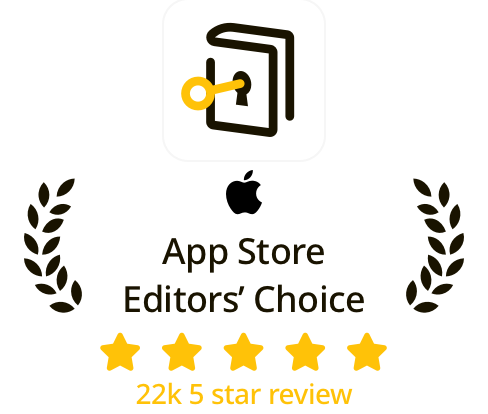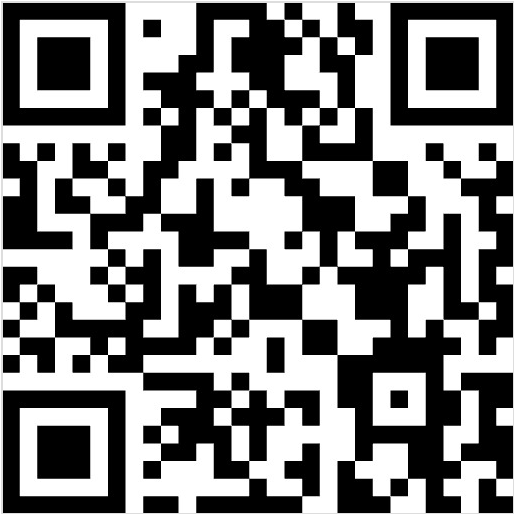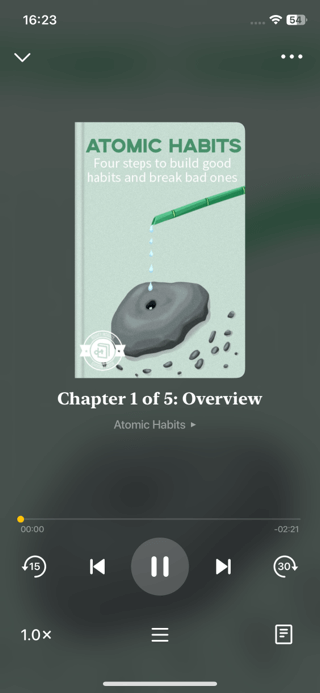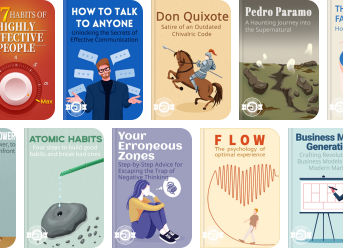Last updated on 2025/05/04
Thanks For The Feedback Summary
Douglas Stone
Mastering the art of receiving feedback gracefully.
Last updated on 2025/05/04
Thanks For The Feedback Summary
Douglas Stone
Mastering the art of receiving feedback gracefully.
Description
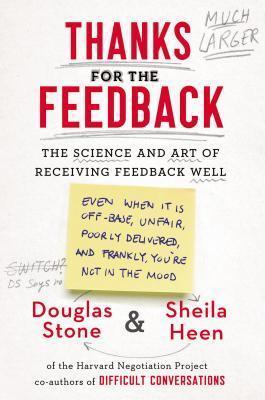
How many pages in Thanks For The Feedback?
348 pages
What is the release date for Thanks For The Feedback?
In "Thanks for the Feedback," Douglas Stone and Sheila Heen delve into the intricate art of receiving feedback—an essential skill that profoundly shapes our personal and professional lives. Rather than viewing feedback as a mere critique or praise, the authors challenge us to embrace it as a powerful tool for growth and understanding, navigating the emotional landscape that comes with both positive and negative input. Through engaging anecdotes and practical strategies, Stone and Heen empower us to transform our relationship with feedback, encouraging a mindset that welcomes constructive criticism while enhancing our ability to communicate effectively. This insightful guide not only teaches us how to receive feedback gracefully but also how to give it thoughtfully, ultimately fostering deeper connections and facilitating success in our interactions. Whether you're a leader aiming to enhance team dynamics or an individual seeking personal development, this book offers invaluable insights that challenge the way we think about feedback itself.
Author Douglas Stone
Douglas Stone is a renowned author, mediator, and co-founder of the Difficult Conversations Project at Harvard University, where he serves as a lecturer. With a profound expertise in the art of communication and conflict resolution, he has dedicated his career to helping individuals navigate challenging conversations and enhance their interpersonal skills. Stone's insightful work extends beyond academia into practical applications, as evidenced by his role as a consultant for various organizations, including Fortune 500 companies and non-profits. His writing, particularly in 'Thanks for the Feedback,' reflects his commitment to fostering constructive dialogue and personal growth through effective feedback mechanisms.
Thanks For The Feedback Summary |Free PDF Download
Thanks For The Feedback
Chapter 1 | THREE TRIGGERS • That Block Feedback
In "Thanks for the Feedback," Chapter 1 delves into the complexities and challenges of giving and receiving feedback, particularly focusing on three distinct triggers that often obstruct productive feedback conversations: Truth Triggers, Relationship Triggers, and Identity Triggers. Understanding these triggers is essential for managing our reactions and fostering effective communication during feedback exchanges. 1. Truth Triggers arise when the content of the feedback feels inaccurate, unfair, or unhelpful. Experiences of truth triggers often lead to feelings of indignation or defensiveness, as individuals may react vehemently against what they perceive to be false criticism. The challenge lies in distinguishing the type of feedback received, which can be categorized into appreciation, coaching, or evaluation. By clarifying this distinction, individuals can better understand the intention behind the feedback. Additionally, it's crucial to genuinely comprehend the feedback before countering it, as miscommunications can stem from a lack of mutual understanding of each other's perspectives. This process might reveal blind spots we weren't aware of, thus enhancing our self-awareness and enabling growth. 2. Relationship Triggers are activated by the dynamics between the feedback giver and receiver. These triggers can create obstacles if past experiences, trust, or perceived treatment overshadow objective feedback. The tendency to engage in "switchtracking"—where one shifts the conversation from the actual feedback to relationship issues—must be avoided in order to effectively address both topics. Recognizing that feedback is often a collective issue rather than solely an individual fault encourages deeper insights and constructive dialogue. This awareness requires stepping back to analyze the relational dynamics at play, allowing both parties to understand their contributions to misunderstandings or conflicts. 3. Identity Triggers focus on how feedback touches upon our self-concept and personal identity. Critical feedback can provoke intense emotional reactions, leading to feelings of threat and insecurity. Different individuals respond to feedback based on their wiring and temperament, which influences how they interpret criticism. For those who view feedback as a fixed assessment of their worth, the reactions can be magnified. It is essential to dismantle these distortions and cultivate a growth identity, wherein challenges and critiques are perceived as opportunities for development. Emphasizing that everyone is on a path of continual improvement allows us to embrace feedback as valuable information rather than a punitive judgment. The chapter elucidates that while these triggered responses are understandable, they can inhibit productive engagement with feedback. Effective feedback interactions require individuals to learn to navigate their emotional responses, articulate their needs, and remain open to perspectives that may initially feel threatening. The key takeaway is that managing our reactions to feedback—through understanding its nature, recognizing relationship dynamics, and cultivating a growth-oriented identity—enhances our ability to benefit from even the most challenging critiques. In summary, each of the three triggers provides insights into the feedback dynamics and suggests that thoughtful engagement with our triggers can foster both personal growth and relational clarity. This sets the foundation for exploring strategies to mitigate the impact of these triggers in subsequent chapters of the book.
Key Point: Understanding and navigating your Truth Triggers can transform how you receive feedback.
Critical Interpretation: Imagine standing before a colleague or mentor who offers you feedback that initially feels harsh or unjust. Instead of allowing defensiveness to cloud your judgment, you take a deep breath and remember that this is an opportunity for self-exploration. By consciously assessing the type of feedback being presented—whether it’s meant as appreciation, coaching, or evaluation—you begin to decode their intentions. This shift in perspective not only enhances your self-awareness but also opens the door to growth. Such moments encourage you to challenge your assumptions, embrace your blind spots, and ultimately evolve into a more resilient and adaptive version of yourself, making the act of receiving feedback an invaluable part of your personal journey and a catalyst for ongoing improvement.
Chapter 2 | SEPARATE APPRECIATION, COACHING, AND EVALUATION
In this chapter, the complexities of feedback are explored through the contrasting experiences of two twin daughters, Annie and Elsie, during a batting practice session with their father. While Annie eagerly absorbs her father's coaching tips, Elsie feels criticized and retreats in frustration, illustrating how different individuals can interpret the same message in vastly different ways based on their perceptions and emotional states. This dynamic reveals that feedback often comprises three distinct types: appreciation, coaching, and evaluation, each serving unique purposes and addressing different needs. 1. Appreciation is fundamentally about acknowledging and valuing someone’s efforts. Through a simple "thank you," it conveys recognition, fosters connection, and helps individuals feel seen and valued. The absence of appreciation can lead to feelings of invisibility in professional and personal relationships. Research supports that feelings of acknowledgment are crucial for motivation and job satisfaction. 2. Coaching's primary aim is to guide an individual towards improvement. It involves constructive guidance on skills, knowledge, and capabilities that can enable growth. However, coaching can sometimes unintentionally convey negative emotions or judgments that lead to misunderstandings. The effectiveness of coaching is often contingent on the emotional context within which it is given and received. 3. Evaluation provides an assessment of performance, indicating where someone stands relative to set standards or peers. It helps to align expectations, clarify consequences, and inform decisions. However, evaluations can carry heavy implications and can be fraught with anxiety, especially if they come with judgments beyond the mere assessment itself. The chapter emphasizes that each type of feedback plays a crucial role in fulfilling human needs and that we require a balanced approach to receiving feedback. Often, individuals do not recognize the distinct needs being met by different kinds of feedback, leading to miscommunications. For instance, a professional may seek coaching but receive evaluation, leaving them feeling frustrated and confused. Challenges arise particularly from the fact that evaluations can overshadow other forms of feedback. During performance reviews, for example, the weight of evaluation can drown out coaching, making it difficult for individuals to absorb constructive advice. Therefore, the authors suggest clearly separating feedback types and communicating their purposes explicitly. This involves checking in with the receiver to ensure they are getting what they need, whether it be coaching, evaluation, or appreciation. To avoid misinterpretations, individuals should engage in open discussions about the intended purpose of feedback conversations. Asking clarifying questions promotes understanding and ensures alignment in feedback sessions. Ultimately, by recognizing and articulating the type of feedback being provided or sought, individuals can navigate the complexities of feedback more effectively, enriching their relationships and professional development. In conclusion, embracing the nuanced dynamics of appreciation, coaching, and evaluation fosters healthier communication and provides a stronger foundation for personal and professional growth. Each type of feedback not only fulfills specific needs but also contributes to a more effective and considerate interaction, reducing misunderstandings and enhancing relationships all around.
Chapter 3 | FIRST UNDERSTAND • Shift from “That’s Wrong” to “Tell Me More”
In this chapter, the author emphasizes the importance of understanding feedback rather than defaulting to dismissing it as wrong. The narrative begins with Holly, a public defender, receiving feedback from her supervisor Irwin, who warns her about becoming too emotionally involved with clients. Instead of considering the feedback, Holly is quick to defend her stance, demonstrating a common reaction to feedback: an inclination to identify what’s wrong with it. 1. The Psychology Behind Feedback Reception: The author highlights our tendency to be adept at finding fault in feedback due to its often vague and generalized nature. Types of “wrong spotting” include examples like “literal inaccuracies,” “contextual misunderstandings,” and even interpretations based on past experiences. 2. Understanding Feedback First: Before jumping to conclusions, understanding feedback involves breaking down the labels used by the feedback giver. These labels can often be misleading and lack the detail needed to enact change. To illustrate, Irwin’s feedback to Holly could have benefitted from specifics about the boundaries needed in professional-client relationships. 3. Distinguishing Data from Interpretation: Effective feedback requires understanding not just what the feedback is, but where it is coming from. This involves recognizing the observations or “data” the feedback giver has and the interpretations they make based on those observations. Miscommunication often arises when the feedback giver’s interpretations are not clearly articulated, as shown in the exchange between Nicholas and his boss Adrianna. 4. Clarifying Advice and Expectations: The forward-looking aspect of feedback—what actions one should take in light of the feedback—is crucial. When receiving coaching, it’s important to clarify what is being recommended. Similarly, when receiving evaluations, it is vital to understand what the consequences are and what is expected moving forward. 5. Shifting Perspective: Instead of labeling feedback as wrong, the approach of “difference spotting” is encouraged. This involves understanding that both the feedback giver and receiver may have differing experiences and perspectives. For example, different stakeholders in a project may have insights that stem from their specialized roles and contexts. 6. Implicit Rules and Biases: Our perceptions and interpretations are shaped by implicit rules we hold about work dynamics. These unconscious rules influence how we interpret feedback and how we believe things should operate. Additionally, biases affect what data we prioritize and how we perceive one another’s actions and intentions. 7. Exploring What’s Right in Feedback: To foster a productive dialogue around feedback, both parties should explore what insights can be gleaned from the feedback, recognizing areas of agreement and understanding where the feedback might hold truth, even if it initially feels unjust. 8. Understanding Disagreement: Sometimes, understanding the feedback leads to disagreement. It’s important to communicate feelings in a constructive manner while continuing the dialogue. By articulating concerns and being curious about the other person's viewpoint, deeper insights can be achieved. 9. The Role of Subjectivity in Feedback: The author acknowledges that no feedback can be entirely objective; personal interpretations and biases always play a role in how feedback is delivered and received. Therefore, it is crucial to engage in thoughtful discussions around feedback to foster improvement, rather than relying solely on metrics or formulaic assessments. 10. Practical Application: The chapter underscores the significance of applying these principles in real-life scenarios. Utilizing proactive questions can enhance understanding, opening up avenues for conversation that unveil the complexities of feedback. The essence of this chapter is a call to shift our approach to feedback from a defensive stance to one that is curious and constructive. By understanding the perspectives of others involved, we not only improve our ability to learn and grow but also deepen our professional relationships.
Key Point: Shift from Defense to Curiosity
Critical Interpretation: Imagine standing at a crossroads where feedback arrives like a gust of wind. Instead of bracing yourself against it, consider opening your arms wide to embrace the lessons it carries. When you shift from a defensive response to a curious inquiry, each piece of feedback becomes a stepping stone—inviting you to deepen your self-awareness and professional growth. By engaging with feedback, dissecting its core, and seeking to understand the intentions behind it, you're not just improving existing skills but also fostering compassion in relationships. This transformative mindset doesn't just illuminate paths for improving performance; it creates a culture of open dialogue, where every interaction enriches your understanding of others and enhances your journey through both personal and professional landscapes.
Chapter 4 | SEE YOUR BLIND SPOTS • Discover How You Come Across
In Chapter 4 of "Thanks for the Feedback," the author, Douglas Stone, explores the intricacies of self-perception versus others' perceptions, highlighting how blind spots can lead to disconnects in understanding ourselves and the impact we have on those around us. The narrative introduces Annabelle, a talented and well-meaning leader whose effort to be respectful is undermined by her unrecognized impatience and contempt, which manifests in her behavior under pressure. Despite her intentions, her colleagues feel disrespected, illustrating a common phenomenon: the gap between intended behavior and received feedback. 1. One of the key concepts introduced is the Gap Map, which illustrates the route from our thoughts and feelings, through our intentions, to our behaviors, and finally to others' perceptions. This framework shows how messages can become garbled over time, leading to a stark contrast between how we perceive ourselves and how others see us. Annabelle’s experiences align with this model, demonstrating that even sincere intentions can misalign with actual impacts. 2. Stone also details the nature of blind spots, which are aspects of ourselves that we cannot see but others can. Common blind spots include the signals our facial expressions and tone of voice convey—elements we often overlook in self-evaluation. For example, Annabelle’s facial cues and tone leak her impatience, leading her team to feel dismissed despite her good intentions. 3. The chapter identifies three amplifiers that exacerbate the gap between self-perception and external perception: - Emotional Math: People often unintentionally minimize their emotions while others perceive them as central to their identity. - Situation vs. Character: When missteps occur, individuals tend to attribute their actions to the surrounding context, while others view them as reflections of character. - Impact vs. Intent: We judge ourselves based on our intentions, while others assess us through the impact of our actions. 4. To illuminate our blind spots, Stone provides strategies for seeking and receiving feedback effectively. Crucially, it’s not about merely hearing feedback but understanding the underlying mechanisms of how we are perceived. He suggests that individuals use their reactions to feedback as a signal of potential blind spots and formulate specific questions to elicit honest responses, such as asking, “What do you see me doing, or not doing, that gets in my way?” 5. Awareness of consistent patterns in our behavior can help us identify blind spots. Instead of getting defensive about feedback, recognizing recurring themes over time can guide personal development. Seeking a second opinion can also provide clarity, as trusted friends can offer an “honest mirror” to reflect our true selves through their perspective. 6. Stone emphasizes the importance of distinguishing between supportive and honest mirrors when seeking feedback. While supportive mirrors provide reassurance, honest mirrors reveal our true behaviors and patterns. To navigate this effectively, individuals should communicate their feedback preferences clearly to avoid misunderstandings. 7. Lastly, the chapter urges readers to work on internal changes rather than simply altering outward behavior. Awareness of true feelings and attitudes is crucial, as genuine respect and understanding will radiate through actions and create a more positive work environment. In summary, effectively bridging the perceptual gap requires an awareness of personal blind spots, active engagement with feedback, and a commitment to reconciling intentions with impacts. This chapter highlights the systemic nature of feedback and the necessity of mutual understanding in interpersonal relationships. Understanding oneself is a journey that involves not just reflection, but a willingness to embrace and act upon the insights that others provide.
Key Point: Bridging the Perceptual Gap
Critical Interpretation: Imagine walking into a room filled with colleagues, all witnessing you with a blend of admiration and confusion. You intend to inspire, yet they perceive impatience or disdain lurking beneath your words. This chapter reveals a profound truth—awareness of your own blind spots can transform these disconnects into genuine connections. By actively seeking feedback and learning to appreciate how your actions resonate with others, you embark on a journey of growth that enriches both your life and the lives of those around you. Embracing this awareness not only empowers you to refine your behaviors but also fosters deeper, more meaningful relationships, as you learn to align your intentions with the impact you create. The feedback you receive becomes a treasure map guiding you through the intricacies of human connection, allowing you to bridge the perceptual gap that often separates intent from reality.
Chapter 5 | DON’T SWITCHTRACK • Disentangle What from Who
In the fifth chapter of "Thanks for the Feedback" by Douglas Stone, the intricacies of giving and receiving feedback within relationships are explored through the lens of a sitcom scenario featuring Louie and Kim. Their exchange over a seemingly innocuous gift of red roses spirals into a deeper conflict, highlighting how feedback can trigger emotional reactions based on past experiences and relationship dynamics. The narrative illustrates what the author terms "switchtrack conversations," where the focus shifts from the original feedback to personal feelings and grievances, leading to misunderstandings. Louie's feelings of being unappreciated overshadow Kim's disappointment in the gift, resulting in a breakdown of communication that is emblematic of many interpersonal conflicts. Here are some crucial insights from this chapter: 1. Understanding Relationship Triggers: Feedback interactions can trigger emotional responses that shift the focus away from the substantive issues. Louie's reaction to the roses wasn't a mere disagreement about the gift; it encapsulated deeper feelings of being unheard and unvalued in the relationship. 2. The Dynamics of Switchtracking: When one person switches the topic due to emotional triggers, both parties ultimately end up speaking past each other. Instead of addressing each other's concerns, they enforce their own narratives, resulting in confusion and unresolved grievances. 3. Types of Relationship Triggers: - Perceptions of the Giver: How we view the person providing feedback significantly impacts our ability to accept it. This includes assessing their credibility, motives, and delivery. - Feelings About Treatment: How we feel treated by the feedback giver also plays a crucial role. A lack of appreciation, autonomy, and acceptance can prompt defensiveness and hinder open dialogue. 4. Feedback from Unexpected Sources: Strangers and difficult individuals can often provide feedback that resonates more than that from friends or loved ones. Their unique and unbiased perspectives can shine a light on areas for improvement otherwise obscured by emotional attachments. 5. Navigating Feedback Conversations: It’s essential to recognize when two topics are at play in a conversation. Recognizing this allows for clearer communication. Proposing to address each topic fully prevents misunderstandings and allows for a more meaningful exchange. 6. Signposting in Conversations: When confronting potential switchtracking scenarios, signposting—verbalizing that there are multiple topics to discuss—can help structure the dialogue. For instance, indicating, "I see we have two separate but important topics: your feedback on my performance and my feelings about feeling unappreciated" allows both parties to address their concerns without losing focus. 7. Decoding the Underlying Issues: Often what appears to be advice or feedback may be a veiled expression of the giver's emotional concerns. Recognizing the broader context behind feedback can lead to a more constructive dialogue and help address relational dynamics rather than surface issues. 8. Revising Conflict Scenarios: By approaching a situation with an awareness of relationship triggers and switching dynamics, individuals can recalibrate conversations to foster understanding and connection rather than conflict. As posited through the hypothetical scenario reimagined between Louie and Kim, a simple acknowledgment of feelings and intentions can redirect the conversation towards resolution. Ultimately, the chapter emphasizes the significance of discerning the deeper emotional currents that influence feedback and the importance of addressing both the content and context of communication in maintaining healthy relationships. A thoughtful approach to feedback can transform potentially triggering discussions into opportunities for growth and deeper mutual understanding.
Chapter 6 | IDENTIFY THE RELATIONSHIP SYSTEM • Take Three Steps Back
In Chapter 6 of "Thanks for the Feedback" by Douglas Stone, the author discusses the importance of understanding feedback through the lens of relationship systems, emphasizing how our interactions contribute to problems and how addressing these systems can lead to more effective solutions. To begin, we often receive feedback framed as personal blame, causing defensiveness. For instance, a person might hear "You need to stop snoring" not as constructive feedback but as a judgment of character. This disconnect arises because individuals perceive different parts of a problem, leading us to blame others for the issues while being oblivious to our contributions. To navigate feedback better, it’s essential to see the relationship system as a whole. A relationship system is defined as a complex web of interactions where changing one component can significantly impact the entire system. Understanding this system is crucial because when something goes awry—like a decline in sleep quality due to snoring—each party often only sees the other's faults rather than their joint impact on the situation. Stone suggests taking three steps back to analyze relationship dynamics. First, from a close perspective, focus on the individual interactions—a person’s needs, preferences, and reactions reveal how both parties influence each other. At this level, it becomes evident how personal traits might clash, contributing to ongoing conflicts, reminiscent of Sandy and Gil's financial disagreements—where both viewed the other as the problem without recognizing their roles in the cycle of blame. Next, expanding the lens reveals role clashes that complicate relationships. Roles shape behaviors and attitudes in ways that might lead to chronic misunderstandings, often labeling each other as adversaries without acknowledging the structural conflicts posed by these roles. For instance, a compliance officer and a trader in a bank may inherently clash due to the tug-of-war nature of their job responsibilities, further exacerbating conflict in their interactions. Finally, taking a broad perspective allows us to appreciate other influencing factors such as organizational structures, policies, and environmental settings. These components can greatly affect individual behaviors and choices, often contributing to unseen dynamics in feedback conversations. By analyzing these broader contexts, solutions can emerge that address systemic issues rather than only individual missteps. 1. Individual Intersections highlight how personal differences lead to friction and misunderstandings within relationships. 2. Role Clashes examine how predefined roles can create tensions that ignite conflict between parties, often misattributing these tensions to personality flaws rather than structural issues. 3. The Big Picture perspective underscores how organizational and environmental factors influence feedback dynamics, necessitating a more holistic approach to understanding and resolving conflicts. Through understanding feedback within these relationship systems, individuals can engage in dialogues that move past blame and defensiveness, fostering an environment conducive to growth and problem-solving. Recognizing one's part in the system promotes accountability and opens the door for collaborative solutions that can alleviate issues such as stress and conflict, ultimately enriching interpersonal relationships. By taking systematic approaches and reassessing our roles and the broader context, we can shift from reactive to proactive responses, making the feedback process iterative and constructive. This approach not only enhances personal growth but contributes to healthier dynamics in our interactions, paving the way for more compassionate and effective communication. The chapter concludes by suggesting that feedback should not just point out individual shortcomings but also highlight these intricate systems. Identifying patterns in feedback dictating consistent themes aids in self-reflection, encouraging personal accountability while also improving collective dynamics and relationships.
Chapter 7 | LEARN HOW WIRING AND TEMPERAMENT AFFECT YOUR STORY
Chapter 7 of "Thanks for the Feedback" by Douglas Stone explores how individual wiring and temperament significantly affect our reactions to feedback. Through the contrasting stories of Krista and Alita, the chapter illustrates the profound impact of our emotional wiring on how we process both positive and negative feedback. Krista embodies a resilient temperament, seemingly immune to negative criticism, while Alita, despite her competence and positive feedback from patients, grapples deeply with criticism that affects her self-perception and emotional well-being. Understanding the underlying mechanisms of how our brains are wired offers both insight and empowerment. Our neural structures dictate emotional reactions, influencing how high we can soar or how low we can fall, as well as how quickly we can recover from setbacks. This understanding can be liberating, allowing us to see that our reactions to feedback are not merely personal failings but are part of our intrinsic wiring. This wiring includes three key components, which can vary significantly among individuals: 1. The first component is Baseline, which refers to the default emotional state we gravitate toward following positive or negative experiences. This baseline affects how we perceive and respond to feedback. Individuals with a higher happiness baseline tend to respond more positively to praise and are less deeply affected by criticism, while those with a lower baseline may amplify negative feedback and struggle to feel uplifted by positive remarks. 2. The second component is Swing, which measures how dramatically one’s emotions fluctuate in response to feedback. Some individuals are highly reactive and experience intense emotional swings, while others maintain a steadier emotional response. This aspect often stems from early temperament, with research indicating that infants who are more sensitive are likely to grow into adults with similar tendencies, which can complicate their adult responses to feedback. 3. The third element, Sustain and Recovery, captures the duration of our emotional responses—how long we hold onto positive feelings versus how long we take to recover from negative ones. This concept illustrates significant variance between individuals; some may bask in positive feedback for days, while others may quickly return to a neutral state or find themselves stuck in negative emotions for extended periods. Moreover, our brain’s composition can influence whether we are more resilient or more sensitive, with different brain regions mediating responses to positive and negative stimuli. The chapter elucidates that despite the biological foundations of our emotional responses, there is inherent hope in the notion of neuroplasticity—our ability to adapt and change over time. Understanding that our temperament is not entirely fixed can empower individuals to seek growth opportunities through practices like mindfulness, exercise, and shifting perceptions. The emotional narratives we construct based on feedback are also discussed in detail, emphasizing how feelings can distort our perceptions of feedback. The interplay between thoughts and emotions can create a skewed interpretation of experiences, often leading us to over-generalize criticisms or glories. It showcases how a minor critique can spiral into catastrophic thinking—transforming it from a simple observation into a sweeping judgment of worth, thereby severely affecting our self-image. In conclusion, wiring plays a crucial role in shaping our emotional landscapes, influencing how we interpret and respond to feedback. By recognizing our unique baselines, swings, and recovery patterns, we can begin to manage our responses more effectively and reconstruct our narratives around feedback, mitigating the detrimental impacts of our emotional distortions. Understanding these principles may ultimately help individuals cultivate resilience and effectively process feedback for personal growth.
Chapter 8 | DISMANTLE DISTORTIONS • See Feedback at “Actual Size”
In Chapter 8 of "Thanks for the Feedback" by Douglas Stone, the focus is on dismantling the distortions that hinder our ability to receive feedback effectively. This distortion often leads to exaggeration fueled by our emotions, making the feedback feel far more overwhelming than it truly is. The narrative opens with Seth, a counselor who grapples with an emotionally charged situation at work. During a discussion about his supervisee's organizational issues, his boss makes a comment that inadvertently triggers Seth’s long-standing worries about his own disorganization. This comment clouds his judgment and amplifies feelings of self-doubt and inadequacy, contributing to a spiral of negative emotions. Seth’s knee-jerk reaction leads him to consider canceling an important trip planned for his father's birthday, revealing how deeply personal feedback can resonate in ways that impact both professional and personal life. To address such distortions and derive meaning from the feedback we receive, five strategies can be employed: 1. Be Prepared, Be Mindful: Anticipating feedback allows us to assess beforehand how we might respond to criticism. Understanding our "feedback footprint"—the patterns of our emotional reactions—enables us to better manage our responses. Becoming cognizant of these ingrained patterns empowers us to recognize and control our immediate reactions. 2. Separate the Strands: It's crucial to distinguish between our feelings, the stories we tell ourselves about feedback, and the actual content of the feedback itself. By identifying what we feel, the narrative we construct around those feelings, and the actual criticism provided, we can disentangle our emotional reactions from the feedback itself. 3. Contain the Story: Our interpretations of feedback can often expand beyond reason when we forget the basic rules of perspective, such as the present not altering the past and that one person’s opinion does not represent everyone’s view. By actively containing the feedback and reevaluating what it pertains to versus what it doesn’t, we can maintain perspective and avoid overgeneralizing from singular experiences. 4. Change Your Vantage Point: Shifting perspectives helps depersonalize feedback, allowing us to reflect as if we were an observer instead of an insider. Imagining how we would perceive similar feedback if directed at a friend provides insight that can alleviate the emotional weight of the message. Additionally, invoking humor can diffuse tension, promoting a healthier emotional state and openness to learn from the feedback received. 5. Accept That You Can’t Control How Others See You: Our self-image and identity can become entangled with how others perceive us. Embracing the reality that we cannot dictate their views can liberate us from excessive concern over their opinions. Reminding ourselves that their assessments are often more about them than us helps mitigate the emotional toll of unwarranted feedback. The chapter closes with an acknowledgment of the emotional challenges associated with feedback. When emotional responses become overwhelming, seeking support from friends or trusted individuals can provide an essential buffer, helping us gain balanced perspectives on our feelings and experiences. While feedback can sometimes seem insurmountable, these strategies allow us to reclaim our narrative and foster growth through understanding rather than defensiveness. By systematically applying these strategies, we can effectively dismantle the distortions around feedback, leading to more constructive learning experiences that enhance personal and professional development.
Key Point: Separate the Strands
Critical Interpretation: Imagine standing on the precipice of a critical moment, when feedback lands like a punch, the emotional waves threatening to pull you under. But what if you learned to separate that moment, to dissect the overwhelming tide of feelings from the actual content being offered? In doing so, you could reclaim your power and control, allowing the feedback to serve as a stepping stone rather than a stumbling block. Picture this: as you sift through your emotions—recognizing exhilaration, fear, and doubt—you draw out the essence of the critique itself, discovering insights that equip you for growth. By reframing the narrative, you cultivate resilience and the courage to face rather than flee from constructive criticism, transforming each piece of feedback into a catalyst for your evolution.
Chapter 9 | CULTIVATE A GROWTH IDENTITY • Sort Toward Coaching
In Chapter 9 of "Thanks for the Feedback," Douglas Stone discusses the importance of cultivating a growth identity to better handle feedback. The emotional impact of feedback, whether positive or negative, can significantly affect our self-perception and identity. The chapter outlines how feedback can destabilize our sense of self and offers strategies to build a more resilient identity. The following key points summarize the insights provided in this chapter. 1. Identity as a Self-Story: Our identity is shaped by the narratives we tell ourselves about who we are—our strengths, values, and capabilities. When feedback challenges these narratives, it can leave us feeling lost and questioning our self-worth. For example, being denied tenure can prompt an individual to reevaluate their identity as a competent academic. 2. Brittle vs. Robust Identity: Not all identities respond to feedback equally. Some individuals possess a fragile, brittle identity that perceives feedback as a threat, while others nurture a robust identity that sees feedback as vital for growth. This section emphasizes that we can learn to strengthen our identities by adopting a more nuanced understanding of ourselves. 3. Complexity Over Simplicity: Simple labels we assign to ourselves often fail to capture the complexity of our experiences. For instance, viewing oneself as merely "smart" or "successful" can leave little room for error or growth. Embracing complexity allows for a more balanced view of oneself, recognizing both strengths and weaknesses without falling into binary thinking. 4. Embracing Nuance: Feedback often evokes a strong identity reaction. When we view ourselves in black-and-white terms, any feedback that suggests we aren’t wholly good can feel devastating. Accepting the intricacies of our experiences enables us to see that being human involves making mistakes and learning from them. 5. Acceptance of Imperfection: Acknowledging that we are imperfect human beings opens the door to personal growth. Stone emphasizes that accepting three truths about ourselves—making mistakes, holding complex intentions, and contributing to problems—greatly aids in internalizing feedback and reducing defensive reactions. 6. Mindsets Affect Learning: The distinction between a fixed mindset and a growth mindset significantly influences how individuals perceive feedback. Those with a fixed mindset view their traits as static, making them more susceptible to feeling threatened by challenges. In contrast, individuals with a growth mindset see potential for development and view feedback as a pathway to improvement. 7. The Impact of Self-Perception: Our sense of self affects how accurately we assess our abilities and respond to feedback. Those with a growth mindset are often better at gauging their strengths and shortcomings, while those with a fixed mindset may struggle due to fluctuating self-assessments based on recent feedback. 8. Responding to Challenges: How we react to struggles shapes our trajectory. Individuals with a growth mindset view challenges as opportunities for learning, while those with a fixed mindset may retreat, fearing exposure of inadequacies. This understanding underlines the importance of nurturing a growth identity. 9. Practices for Cultivating Growth Identity: The chapter concludes with three practices to develop a growth-oriented identity: - Sort Toward Coaching: Differentiate between feedback intended as evaluation versus coaching. Embracing coaching data can minimize identity-triggered anxiety, allowing for constructive learning. - Unpack Judgment from Evaluation: Break down evaluation into assessment, consequences, and judgment to better understand what aspect is triggering defensive feelings about your identity. - Give Yourself a “Second Score”: After receiving feedback, grade yourself on how well you handled the situation. This “second score” reflects personal growth and resilience, helping to foster a growth-oriented mindset. In summary, the chapter emphasizes that cultivating a growth identity, moving away from simplistic self-descriptions, embracing complexity, and reframing feedback as learning opportunities can significantly enhance the way we perceive and respond to feedback, ultimately leading to personal growth and resilience.
Key Point: Embracing Imperfection
Critical Interpretation: As you navigate the complexities of your life, remember that it’s perfectly okay to be imperfect. The acceptance of your flaws, mistakes, and the intricate intentions behind your actions allows you to grow and evolve. Instead of seeing feedback as a threat that shakes your self-worth, embrace it as an opportunity to learn and refine who you are. When you acknowledge that you are a multifaceted individual, rich with both strengths and weaknesses, you begin to foster resilience within yourself. It’s this journey toward accepting your imperfections that can inspire you to rise above challenges, cultivate a stronger self-identity, and truly thrive, both personally and professionally.
Chapter 10 | HOW GOOD DO I HAVE TO BE?Draw Boundaries When Enough Is Enough
In Chapter 10 of "Thanks for the Feedback" by Douglas Stone, the author delves into the vital aspect of setting boundaries regarding feedback in our personal and professional lives. The concept of personal boundaries is paramount as it allows individuals to determine what feedback they wish to accept or reject, ensuring their emotional well-being and maintaining healthy relationships. The chapter illustrates these boundaries through the metaphor of an emotional acre, wherein each individual possesses their personal space, marked by a fence that needs to be safeguarded. 1. Establishing boundaries is crucial. The ability to turn down or avoid feedback is not merely an ancillary skill; it is central to personal growth and relationship dynamics. The power of saying “no” to feedback is highlighted as an essential component of self-determination. For example, the narrative introduces Martin, who, after decades of experience in the oil industry, whimsically asserts his goal of simply wanting to be left alone about new goals. 2. Three types of boundaries are introduced to manage feedback effectively: First, the soft boundary of "I may not take your advice" allows for listening while retaining the liberty not to act on the feedback. Second, the firmer "I don’t want feedback about that subject, not right now" facilitates protection from unwanted discussion on sensitive topics. Third, the most assertive "stop, or I will leave the relationship" signifies a clear stance about the ramifications of unsolicited judgments. 3. Identifying when to impose these boundaries involves self-reflection. Feelings of overwhelm or inadequacy signal a need for boundaries. Questions regarding the nature of the feedback, including its relevance, persistence, and the relationship dynamics at play, help discern whether a boundary is necessary. If feedback continually devalues one's character or consistently compels unwanted change, it’s time to establish clearer boundaries. 4. Common unhealthy relationship dynamics such as constant criticism, hate-love patterns, and renovation relationships provide concrete contexts for boundary-setting. The chapter explores how relationships, whether familial or professional, can degrade autonomy and personal well-being through relentless feedback. For instance, Hunyee faces criticism from her mother, illustrating how incessant evaluation can cultivate emotional distress and the necessity to reshape those interactions. 5. Effectively communicating boundaries requires clarity. When rejecting feedback graciously, it is essential to be transparent about one’s needs while showing appreciation for the giver’s intentions. For example, PJ articulates her anxiety holistically, conveying how well-meaning advice exacerbates her nervousness before lectures. By framing her requests with kindness and specificity, she can assert her boundaries without diminishing the relationship's value. 6. Offering specific requests, outlining timeframes for these boundaries, and delineating potential consequences are vital to ensure mutual understanding. Requests should be precise, avoiding vague terms that may provoke defensiveness. Further, articulating the implications of ignoring such boundaries prompts accountability on both sides, fostering healthier interactions. 7. Finally, Stone emphasizes the importance of diligence in mitigating the impact one's decisions have on others. While asserting boundaries, one must acknowledge the effects on surrounding individuals—be it co-workers or family. Engaging in collaborative problem-solving can ease relational tensions, ensuring that mutual respect and understanding are maintained even in the face of non-change. In summary, adeptly navigating the landscape of feedback through established boundaries empowers individuals to maintain integrity and self-esteem. By practicing mindful rejection of unhelpful feedback, fostering open communication, and recognizing the responsibilities that come with personal choices, one can cultivate healthier relationships and a more authentic self.
Chapter 11 | NAVIGATE THE CONVERSATION
In "Navigate the Conversation," Douglas Stone outlines how to approach feedback discussions effectively. He likens feedback conversations to the process of creating animated films, where key moments, or "keyframes," guide the narrative. These keyframes can help structure our conversations, ensuring we navigate through the complex dynamics of feedback exchange. The chapter emphasizes the importance of handling interactions with awareness and skill, proposing a structured approach in three main parts: the opening, body, and close of the conversation. To effectively open a feedback conversation, it is essential to first align with the giver on the purpose of the discussion. This involves asking three critical questions to clarify the feedback: Is this feedback? Who decides what to do with it? Is it final or negotiable? Establishing this groundwork helps both parties understand each other better and sets the stage for a more productive discussion. Once aligned, the body of the conversation involves four essential skills: listening, asserting, managing the conversation process (referred to as "process moves"), and problem-solving. Listening is about genuinely understanding the other person's perspective, which can be challenging when triggered by feedback that feels unwarranted. Asserting involves articulating one's viewpoint while being careful to present opinions rather than absolute truths. Process moves help steer the conversation towards more productive paths, ensuring that both parties feel heard and understood. Finally, problem-solving addresses the core issues raised by the feedback and helps participants decide on actionable next steps. Throughout the conversation, it is crucial to listen for underlying interests rather than getting caught up in positions. This shift encourages creative problem-solving, as participants can explore various ways to satisfy mutual interests instead of clinging to rigid solutions. For example, understanding the motivation behind feedback can lead to innovative ways of addressing concerns without compromising on fundamental values. To bring the conversation to a close, both parties should clarify their commitments, including action steps and timelines. This closure ensures everyone understands what was discussed, what will change, and what follow-up actions are expected. However, the process doesn't end here—effective feedback conversations are ongoing and require continuous reflection and adjustment to maintain healthy dialogue. Stone's insights emphasize that mastering the art of navigating feedback conversations involves blending these skills with emotional awareness and curiosity. By honing these abilities, individuals can foster more constructive interactions that lead to personal growth and improved relationships, be they professional or personal. In summary, feedback conversations, when approached thoughtfully, can unleash powerful opportunities for learning and collaboration.
Key Point: The Importance of Aligning on Purpose
Critical Interpretation: As you step into your next feedback conversation, think about how aligning with the other person on the purpose of the discussion can transform the interaction. By asking clear, pointed questions about the feedback at hand, you can foster an atmosphere of understanding and cooperation. Imagine how much more productive your conversations with colleagues, friends, or even family can become when both of you are on the same page. Instead of feeling defensive or misunderstood, you may find that clarity unlocks a deeper dialogue. This foundational alignment not only paves the way for more fruitful conversations but also empowers you to engage in meaningful exchanges that contribute to your growth and the strengthening of your relationships.
Chapter 12 | GET GOING • Five Ways to Take Action
In Chapter 12 of "Thanks for the Feedback," Douglas Stone presents five actionable strategies to help individuals effectively take action based on feedback and improve their personal and professional development. These strategies emphasize the importance of simplifying feedback, focusing on specific changes, and embracing a mindset of experimentation. 1. Name One Thing: When overwhelmed with feedback, identifying a single actionable change can streamline the process. It’s essential to simplify the choice of focus, allowing for more deliberate improvements rather than getting bogged down by an exhaustive list of potential changes. Leaders can gain clarity by asking for a single key area to work on. For instance, rather than being overwhelmed by ten different concerns, focusing on one meaningful aspect provides a clear starting point. 2. Listen for Themes: Instead of getting lost in a multitude of vague suggestions, seeking feedback from multiple sources helps identify recurring themes. This method provides a clearer understanding of one’s strengths and weaknesses. For example, Rodrigo, faced with vague feedback, engaged with colleagues to discern patterns about his effectiveness, which directed his focus to a specific area for improvement. 3. Ask What Matters to Others: Understanding how a particular change might benefit those around you can guide priorities. In a scenario where Sharon asked her children how she could improve her behavior, the answers revealed insights into family dynamics that she hadn’t considered before. This highlights how feedback can inform mutual growth, fostering a supportive environment. 4. Try Small Experiments: Instead of committing fully to a change immediately, consider small, low-stakes experiments to test feedback. This allows for a risk-managed approach to improvement. By viewing changes as experiments—like adjusting a speech or trying new methods—individuals can gauge their effectiveness without the pressure of a permanent shift. Such a mindset fosters flexibility and encourages learning through trial and error. 5. Recognize the J Curve: Understanding that change often leads to temporary discomfort is crucial. When adopting new behaviors or approaches, immediate results may not show improvement, leading to frustration. Recognizing this “J Curve”—wherein initial efforts may drop one's satisfaction before eventually rising—can encourage persistence through difficulties and reinforce commitment to change over time. Committing to a new behavior for a set duration, even through its challenging phases, can ultimately yield greater rewards. The chapter emphasizes the importance of approaching feedback as a collaborative process rather than a one-sided critique. It encourages ongoing engagement with peers, fostering a culture of transparent communication, where both parties can learn and grow together. By coaching their coaches and sharing expectations, individuals can enhance their learning and feedback experiences, ultimately benefiting their relationships and professional performance. The narrative illustrates that feedback is not just about individual performance but about building stronger connections through mutual understanding and support.
Chapter 13 | PULL TOGETHER • Feedback in Organizations
In Chapter 13 of "Thanks for the Feedback," Douglas Stone explores the complexities of feedback systems within organizations, drawing on the experiences of two contrasting managers, Everett and Pierre. Everett, a supply chain manager, initially resisted the insightful perspectives provided by a 360-degree feedback system but later recognized its value in driving self-awareness and personal growth. In contrast, Pierre, the president of a retail clothing chain, concluded that their existing performance management system absorbed too much time and left employees demoralized, ultimately eliminating formal performance reviews altogether. 1. The central theme emphasizes the imperfections of feedback systems in organizations, acknowledging that neither individuals nor systems are flawless. While systems can be evaluated for effectiveness, they must contend with varied temperaments and individual differences in the workforce. For example, the consistent quality of evaluations is challenged by management styles that vary in effectiveness, which can foster complacency among team members relying on feedback. 2. There is an inherent tension between wanting to provide constructive criticism and fearing the consequences that may arise—both for the provider and the receiver. Managers often give inflated reviews to avoid confrontations, leading to a performance appraisal system that lacks credibility. The inability to effectively communicate both praise and criticism undermines the entire feedback process, resulting in disengaged teams and unaddressed performance issues. 3. Recognition of the need for clearer communication within performance management systems is paramount. Human Resources (HR) and organizational leaders should not shy away from discussing the negatives of feedback systems along with their benefits, as this transparency fosters a culture where employees feel heard and understood. Just as Jane, the new head of HR in the chapter, successfully presents both benefits and drawbacks to her management team, all leaders must create an environment where continuous discussion is encouraged. 4. It is critical to delineate between appreciation, coaching, and evaluation. Each of these aspects of feedback serves a unique purpose and should not be conflated. Evaluations should maintain fairness and clarity; coaching should provide ongoing support for development; and appreciation must be frequent and genuine to nurture a responsive workplace culture. This balance empowers employees to embrace feedback rather than retreat from it due to fear or insecurity. 5. Cultivating a learning culture involves recognizing that feedback is a two-way street. Managers must model a commitment to personal growth while inviting their teams to engage in mutual learning experiences. Sharing stories of mistakes and successes fosters an environment where errors become learning opportunities rather than reasons for humiliation. By openly discussing personal challenges and modeling a growth mindset, leaders can encourage their teams to pursue learning proactively. 6. For feedback to be effective, it is essential to recognize the varied reactions to it and consider the individual differences among team members. Feedback givers should account for the emotional sensitivities of receivers and adapt their approaches accordingly. This alignment can mitigate misunderstandings and enhance the effectiveness of performance discussions. 7. Finally, feedback receivers bear responsibility for their learning journey. They should actively seek out guidance, question their performance, and implement suggestions from coworkers. This proactive attitude can break the cycle of dependency on formal evaluations, allowing individuals to learn continuously from each interaction they have. In summary, effective feedback in organizations is inherently complex, characterized by the imperfect nature of human interaction and the varied needs of team members. Emphasizing communication, transparency, and a commitment to mutual growth offers a path to managing these challenges, ultimately creating environments where both individuals and organizations thrive collectively.
Key Point: Cultivating a learning culture through feedback.
Critical Interpretation: Imagine stepping into a world where feedback is not just a ritual, but a powerful tool for growth and connection. When you embrace the idea that feedback is a two-way street, you unlock the potential for transformation—not just in yourself, but within your entire team. This chapter inspires you to foster openness by sharing your own experiences, mistakes, and lessons learned, creating an environment where vulnerability is met with support and collective learning. You begin to realize that every piece of feedback is an opportunity, not a threat; it’s a chance to engage in meaningful discussions that drive both personal and organizational improvement. Driven by this commitment to growth, you start inviting feedback into your daily interactions, seeing it as a chance to refine your skills and contribute more effectively to your team. Ultimately, this mindset shift transforms feedback from a feared evaluation into a celebrated dialogue, paving the way for enriching experiences and continuous evolution in your personal and professional life.
